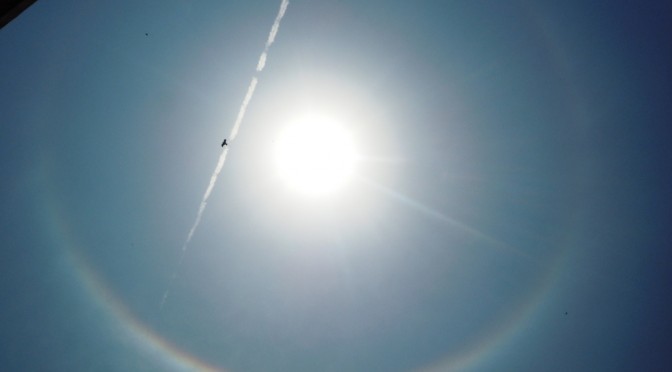A halo (from Greek ἅλως, halōs;[1] also known as a nimbus, icebow or gloriole) is an optical phenomenonproduced by light interacting with ice crystals suspended in the atmosphere, resulting in a wide variety of colored or white rings, arcs and spots in the sky. Many halos are near the Sun or Moon, but others occur elsewhere or even in the opposite part of the sky. Among the most well known halo types are the circular halo (properly called the 22° halo), light pillars and sun dogs, but there are many more; some of them fairly common, others (extremely) rare.
The ice crystals responsible for halos are typically suspended in cirrus or cirrostratus clouds high (5–10 km, or 3–6 miles) in the upper troposphere, but in cold weather they can also float near the ground, in which case they are referred to as diamond dust. The particular shape and orientation of the crystals is responsible for the type of halo observed. Light is reflected and refracted by the ice crystals and may split up into colors because of dispersion. The crystals behave like prisms and mirrors, refracting and reflecting light between their faces, sending shafts of light in particular directions.
Atmospheric phenomena such as halos were used as part of weather lore as an empirical means of weather forecasting before meteorology was developed. They often do mean that rain is going to fall within the next 24 hours as the cirrostratus clouds that cause them can signify an approaching frontal system.
Other common optical phenomena involving water droplets rather than ice crystals include the glory and therainbow.
-Wikipedia
- PatnaBookFair 2022ALow Key Affair - December 13, 2022
- Barbeque Nation - November 22, 2021
- KFC Anisabad - October 22, 2021
